Does this sound familiar? You turn your RV furnace on, you hear the blower run, but it doesn’t light, and the blower turns off. This is one of the most common RV furnace problems people experience when it comes to the RV furnace not working. Does this mean that you need a new furnace? No, in most instances, this is something that you can troubleshoot and fix yourself.
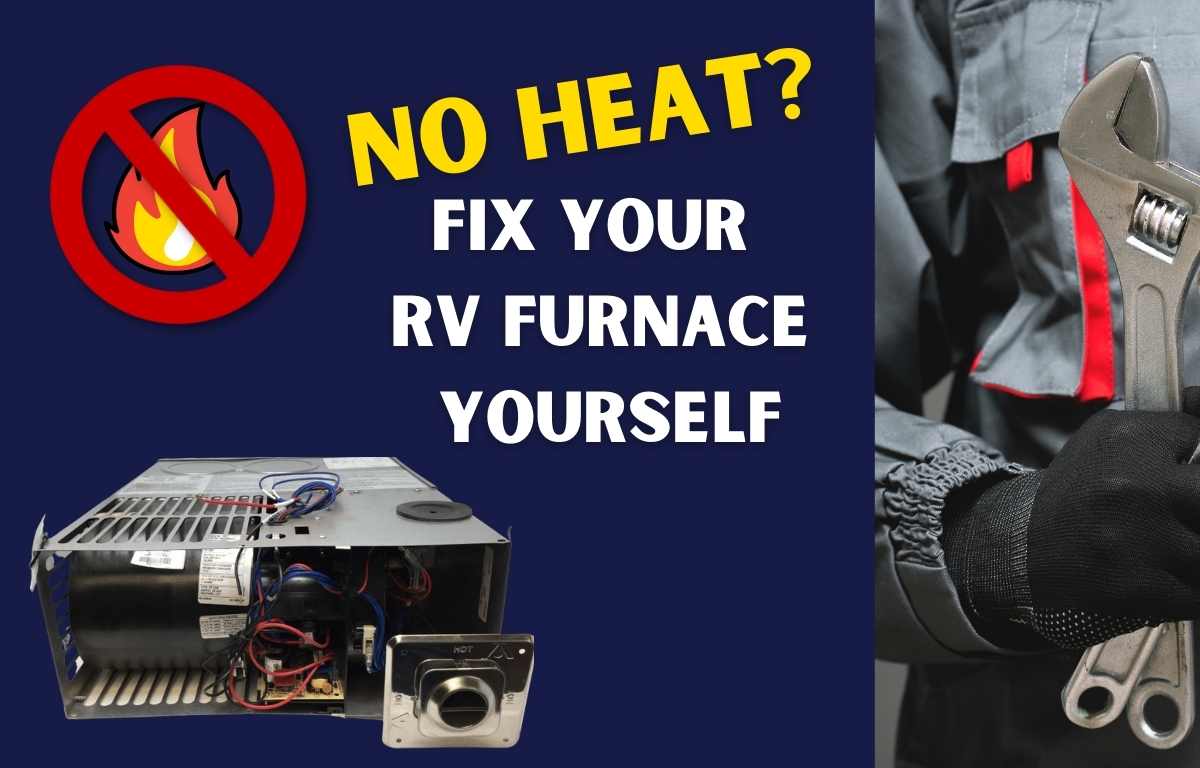
The following tips are only if your RV furnace blows cold air, fails to light, and turns off after running for a short period.
The shortlist of RV Furnace Troubleshooting Steps:
- Check your propane supply
- Check for sufficient power
- Inspect RV vents
- Check sail switch
- Inspect flame sensor
- Check limit switch
- Check igniter
How does an RV Furnace Work?
Learning how a Recreational Vehicle (RV) furnace works is essential to understand this problem. The problem you’re experiencing is likely related to one of several safety features of your RV furnace. When you turn on your RV furnace, it will follow a safety startup process. Once the thermostat registers that the requested temperature is higher than the current temperature, it will engage the RV furnace.
The first step of startup an RV furnace is for the furnace blower motor to turn on. The blower will typically run for 15-30 seconds before the furnace tries to ignite. This test ensures that the blower exhausts any built-up combustibles in the system before it lights. Once the blower runs for a short period, the furnace will receive the signal to ignite. This is started by the furnace fan using airflow to depress a small switch called a sail switch. If depressed (closed), it sends a signal to send propane to the system. At this point, you should hear a clicking sound from the electric igniter. This sound indicates a spark is being applied to the propane released into the furnace burn chamber.
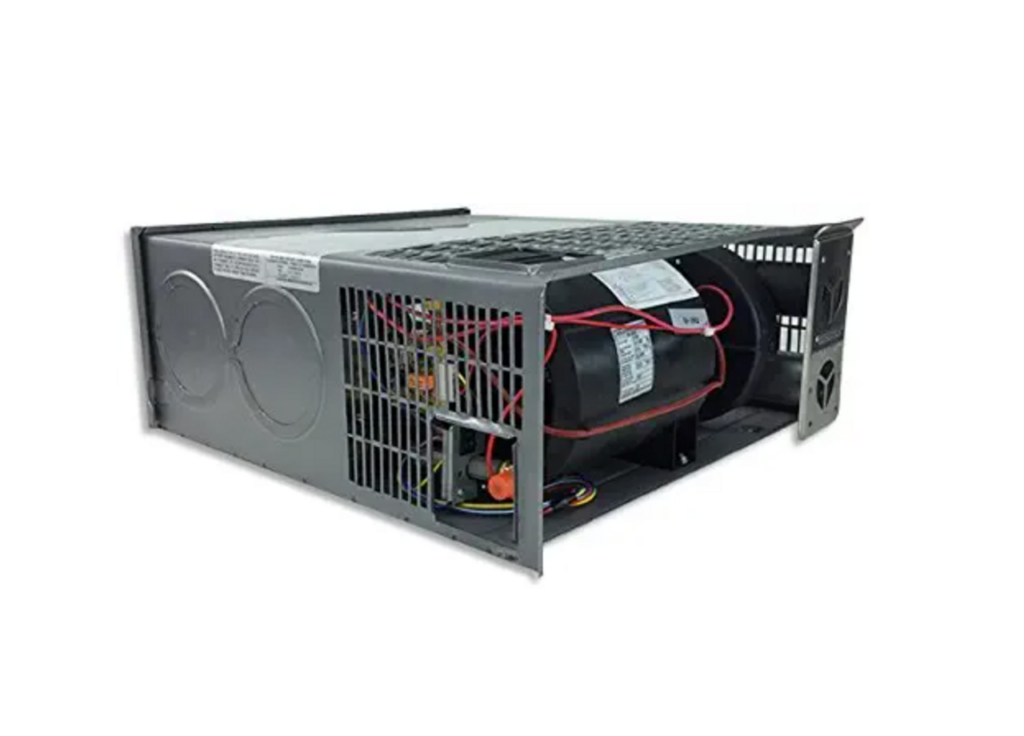
Once lit, the furnace will begin to heat up. If the temperature stays within the limits, it will continue to run until the RV thermostat says not to (reaches the set temperature). If the temperature gets too hot inside the chamber because of excess heat, the high limit switch, another safety feature, will trigger, cutting off the fuel supply. As long as the temperature is within the limit, the furnace should continue to run.
Next, the regulator will continually supply propane gas to the unit, which will burn inside the combustion chamber. As long as you have an adequate propane gas supply, the furnace will continue to run, heating the air in the heat exchanger and blowing hot air into the RV until the thermostat recognizes the desired temperature. Next, the furnace will receive a signal to cut off the propane supply and go into shutdown mode. Finally, it will repeat the startup process when the thermostat calls for more heat.
Why your RV furnace doesn’t light?
If the furnace doesn’t light, the RV furnace will recognize this and turn it off. This safety feature prevents propane from running into the RV furnace without ignition. It’s a critical safety feature and is part of every RV furnace.
Solving this problem can seem complicated. However, while it can signify a bad furnace component, it doesn’t always indicate an expensive repair. So before you call out a mobile RV tech or take it in for servicing, there are a few things that you can try yourself, assuming you’re a little handy and comfortable using some basic hand tools.
Below are some troubleshooting steps to follow:
1. Check the propane
One of the most common problems is actually the simplest to solve. You may be out of propane, or your propane tank valve may be closed. If this is the case, your furnace will not receive any propane and will be unable to light. Therefore, it’s worth checking your fuel source levels and ensuring the valve is open.
A propane pressure lock is one of the most common issues an RV owner may experience, which is easy to fix. Most RV propane regulators have a safety feature that prevents large amounts of gas from exiting the tanks into the propane line too quickly. Unfortunately, this can sometimes be triggered when you replace a tank. For this reason, if you just had your tanks filled and now your furnace isn’t starting, this could be the problem. To resolve this, turn off your propane tanks and reopen them very slowly. This will allow the propane to enter the system at a controlled pace and should solve your problem.
Additionally, if it’s a very cold night, it’s also possible for your regulator to freeze up and prevent gas flow. A temporary fix to diagnose this problem is to pour hot water over the regulator. However, if you do this, dry it off immediately, so the water doesn’t freeze, and coat the regulator with ice.
You can also turn on your stove and make sure that it lights. If you have adequate propane for the stove burners, you should also have it for the RV furnace. If your stove does light, let it run for a few minutes to ensure you’re not simply burning any residual propane in the line. f it does, turn on the oven and light the pilot light. You can also test the propane at the water heater and ensure you’re getting gas there. If it stays lit and you’re sure the tanks aren’t empty, move to the next step.
If propane isn’t flowing from the tanks and you know that they’re full, it’s also possible that you may have a bad regulator. While they’re typically very dependable, they can malfunction. Luckily, replacing a propane regulator is an easy fix.
2. Fuse and Battery
While a relatively simple fix, it’s easy to overlook. Before pulling apart the furnace components, ensure it’s getting power. Next, check for a blown fuse in your fuse panel or circuit board for the RV furnace. Since most RV furnaces run off 12 volts DC power, you’ll need to check the actual fuse and not simply flip a circuit breaker switch. If it’s blown, try replacing it. If it continues to blow, you have an electrical load problem caused by a loose or broken wire or malfunctioning component on the furnace.
Also, you may have low battery voltage if you’re operating on battery power. It’s easy to miss this problem if you’re plugged into shore power. Sometimes that power at the campsite goes out, and you don’t notice because your lights and other RV appliances are functioning. Check your outlets and battery voltage to ensure you have an adequate power supply and not simply experiencing a dead or dying battery. If your battery isn’t fully charged, you may not have enough power to allow the fan to rotate at the proper speed, causing the ignition sequence to stop when the sail switch doesn’t engage.
3. Check vents
While it’s not too common for a vent to become plugged up, it can happen if it sits in storage. Therefore, you should always inspect your RV vents at the beginning of every camping season. Any small opening makes a great place for mice or insect nests.
https://amzn.to/3VVPeuw
Your furnace exhaust vent expels hot air from the combustion chamber. It needs to flow freely (no obstructions). If it doesn’t, it can cause your furnace to shut off or, worse, start a fire. If you see any mice sign or other debris plugging your vent, you’ll need to clear it and clean your furnace since you likely have other material inside the furnace chamber.
4. Sail Switch
The RV sail switch is a simple switch, like a light switch, that, once engaged, sends a signal to the propane valve to open. If the switch doesn’t engage, it won’t send that signal; therefore, your furnace can’t ignite. Next, the RV furnace blower fan engages the sail switch. The sail switch isn’t too complicated. It is simply a thin metal sitting within the blower’s body. Once the blower runs, the air produced by the blower will force the switch (the thin piece of metal) to close, completing the circuit.
If the blower can’t depress the switch, it will never engage, so that it won’t trigger the propane valve to open. Without the propane valve open, it can’t release into the furnace and won’t light. A tell-tale sign of a malfunctioning sail switch is when you turn on the furnace and hear the blower start up and run, followed by some clicking of the ignitor. However, it will turn off because it doesn’t light. It doesn’t ignite because the propane valve never opens. This scenario often indicates that the sail switch is not engaging.

There are a few things that can cause this problem. First, while the sail switch may be bad, this is usually not the case. One of the most common reasons a sail switch may fail is when a small amount of lint or fur gets into the switch and prevents it from closing correctly. If you have animals in your RV, that is a good indicator that this may be the problem. Since most RV furnaces don’t have an air filter, anything circulating in the air (dust, hair, etc.) can enter the furnace area.
It’s important to note that it only takes a tiny piece of debris (lint, dust, pet hair) to cause this problem. You can typically remove the switch and clean the blockage by hand if this is the issue. Cleaning the sail switch is not difficult. If you have outside access to the furnace, this can be a 5-minute task. If not, you may need to remove the furnace to access it.
If you need to remove the furnace, you’ll likely need to remove the propane supply line connection. This process isn’t complicated, but you should always be careful when working around propane. Always turn your propane off if you’re working in or around a gas line or appliances. You should also be comfortable working with propane lines and fittings. Finally, you’ll need to connect this back up correctly, or you may create a dangerous situation.
An underperforming blower is the other common problem associated with a sail switch that doesn’t engage. If the blower can’t produce enough airflow, it may not engage the switch. While this can always indicate a bad blower, a more typical scenario is a low battery. The blower may receive low voltage causing it to run, but not fast enough. A dying battery can always cause this problem. Therefore, ensuring that you have an adequately charged battery for your furnace to operate is essential.
5. Flame Sensor
Your RV furnace, for a good reason, has many safety devices. One of these is the flame sensor. When your RV furnace lights, a small sensor inside the combustion chamber will detect the flame and send a small current of electricity to the control board, telling it that everything is functioning as needed. If it doesn’t recognize a flame, it won’t send that message, and the furnace will turn off. This issue may appear similar to a malfunctioning sail switch.
The sensor will keep the gas flowing if your furnace lights and continues to burn propane. However, a bad sensor can indicate that there is no flame when there is one and cause the furnace to turn off. This is less common to fail than a blocked sail switch, but if you experience a furnace that runs, blows hot air, then shuts off, this could be the culprit.
The most common problem with a flame sensor is a dirty one because burning any fuel creates moisture, and over time, metal can rust. Also, if your furnace is running rich (too much fuel and not enough air), it can create soot, which can coat the sensor and other furnace components. So the most common fix for a faulty lame sensor is typically a good cleaning.
6. Limit Switch
Once the sail switch engages, it will send power to the gas valve, telling the system to send propane to the furnace. The gas valve will open and allow propane to enter the furnace. While the gas valve can be a problem, it’s not very common. If the sail switch works and powers the gas valve, the furnace will receive fuel and should attempt to light, and the chamber will heat up. The next test of the furnace is to ensure the chamber temperature is within the correct range. If it gets too hot, it will trip the limit switch. A tell-tale sign of a malfunctioning limit switch is that the blower will run, you may notice some heat coming out of the vents, but it will shortly turn off. The fan will then blow cold air and then turn off.
Here’s an overview of the steps for the furnace lighting: The thermostat will tell the furnace to turn on, which will engage the blower. The blower will trigger the sail switch and then send power to the limit switch, telling the furnace it’s time to light. If the limit switch is faulty, it may not trigger the ignitor, or if it does, it may run for a short period and then turn off. If it is bad, it’s possible that you won’t even hear the furnace clicking trying to ignite. As a result, the fan motor will stop, and the furnace won’t light.
Another problem that can cause the high-limit switch to trip may be improper air flow created by a blocked duct. If the furnace can’t exhaust the warm air created, the temperature inside the chamber may increase and trip the switch. Always check to ensure that any vents connected to your air ducts are unobstructed and flow freely, providing proper airflow to the living space of the RV.
If you have a bad limit switch, you’ll most likely need to replace it. It’s not a difficult task, but you will need to order a new switch to fix it. You may have a bad connection, but that isn’t very common.
7. Ignitor/electrode
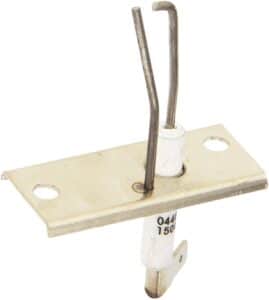
The final step of DIY troubleshooting for this scenario is inspecting the ignitor/electrode. Assuming that the sail switch is working and sends the signal to the limit switch to light, the next step is creating the spark (the clicking that you hear) to light the propane. If the sail switch and limit switch operate correctly, you may have a bad ignitor. These don’t typically fail as often as the sail switch and limit switch, but that’s not to mean they can’t.
When diagnosing the ignitor, the first thing to do is remove it and check for corrosion or a broken metal arm. It’s similar to a spark plug, where there is a gap between two pieces of metal. If one of the pieces breaks, it can’t create a spark. Likewise, if the gap is too wide or narrow, it may not be able to spark. The required gap is usually ⅛” of an inch. An excellent way to measure this is to insert a ⅛” drill bit in the gap opening. If it doesn’t fit or there is too much room, you can try adjusting it, being careful not to break the switch.
Conclusion
While these are not the only things that can fail on a furnace, they are some of the more common issues people experience when their furnaces don’t light. If your fan blows but fails to light and then turns off or turns off shortly after lighting, you may be dealing with one of the above problems. If you’re comfortable working on appliances, you can try to fix/diagnose these issues yourself. However, you may want to call an RV tech or take it to a repair shop if this is outside your comfort zone. You are working with a propane appliance and do not want to create a dangerous situation for you or your family. If you’re camping in cold weather, you don’t want to simply switch to electric space heaters since the furnace is typically needed to heat the underbelly of your RV, preventing your pipes from freezing.
It’s also important to note that various things can cause the above issue. One may be a bad control board (the brains of the furnace). Replacing this can be more complicated and expensive. This repair is probably best left to an RV tech. It’s also possible that you may have a bad gas valve, which isn’t providing enough gas pressure to the furnace. Finally, you may need a new thermostat if it’s malfunctioning.
Knowing your RV and how it works can give you the confidence to head out on the road. If you need to fix a problem, it’s good to know that furnace replacement parts are widely available and not too expensive. In addition, a lot of information is available to provide you with the knowledge to diagnose and fix problems. While this can save you some money, it can also save a camping trip if something goes wrong. As with most things with an RV, performing routine RV maintenance is essential for your components to operate properly. Good Luck!
Once you get your RV furnace up and running, check out some great tips for lowering your RV propane use. Also, consider picking up a
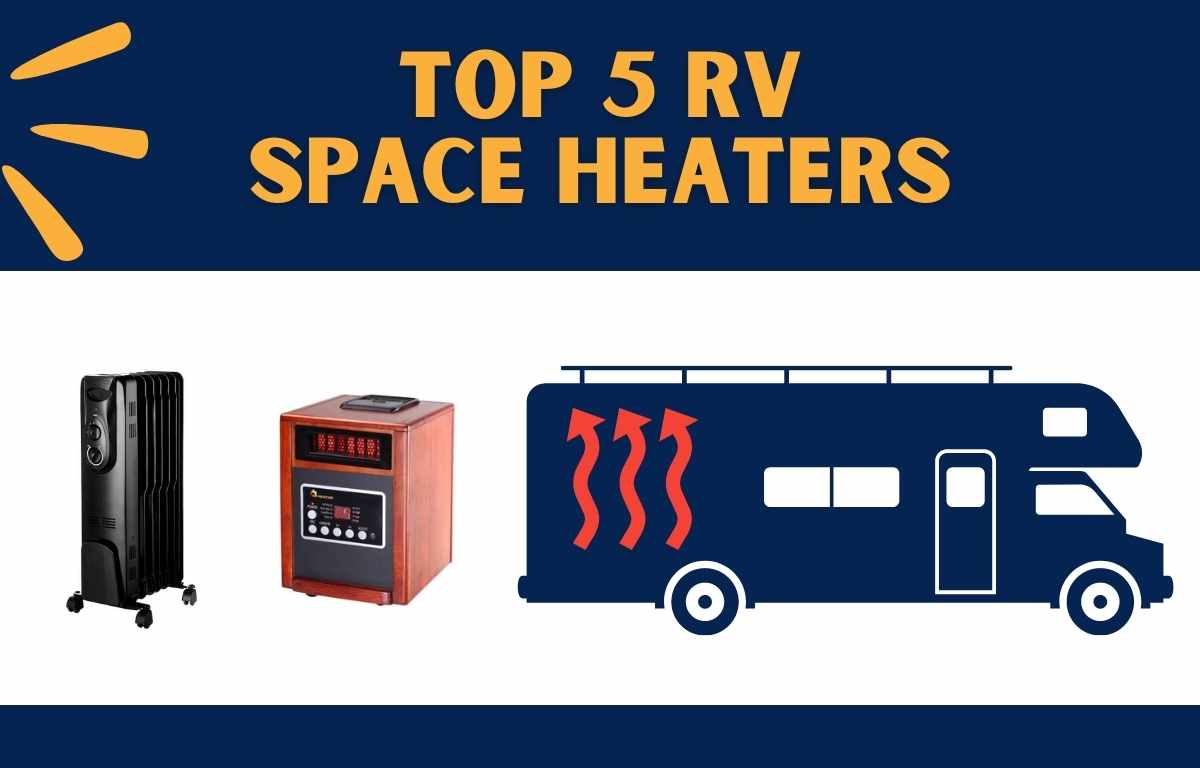
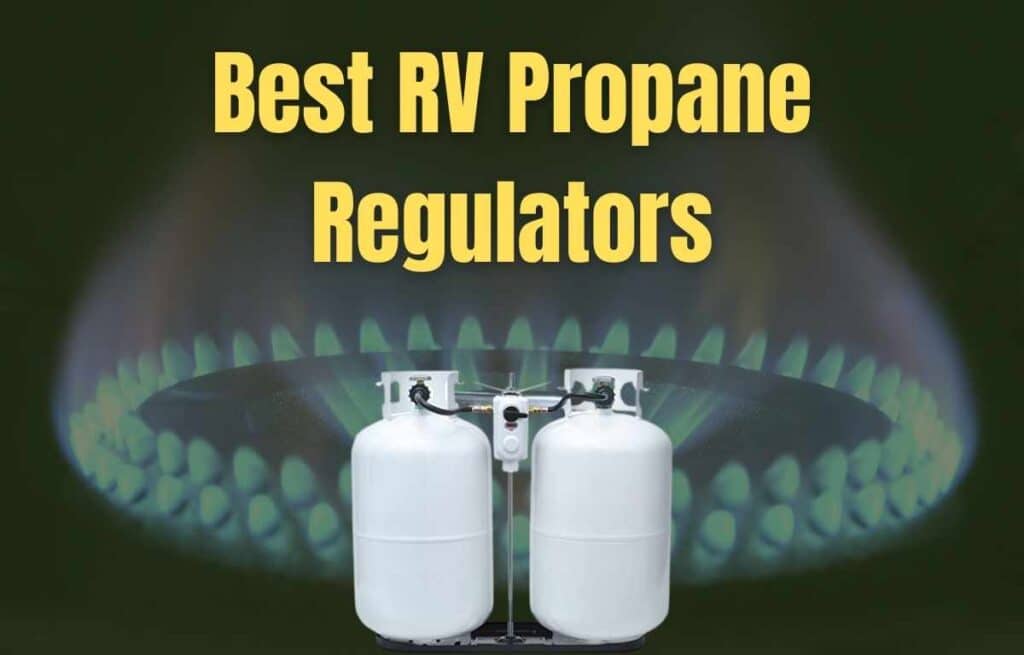
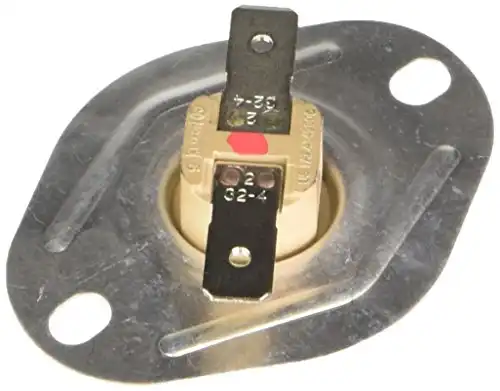

Best article I’ve ever read with step by step & explanations as to why & what to do. Especially when you can’t just get a tech every time something happens. Thank you! – C McCormick
So happy it was helpful! Thanks for stopping by.
Great detailed article.
For people* with good experience with tools, this can save lots of time and money.
*As the author mentions, being good with tool is not a guarantee of a safe fix. Propane is dangerous, so be cautions with what you get into.
Thank you for reiterating this point.
thank you for the article
Sure thing- thanks for stopping by
Thank you so much for this article and video. I’m 65, female living in my camper permanently I have cats with me. So, I’m guessing I have an unhappy sail switch, covered in kitty hair. At least I’m praying that is all it is. Worked fantastic last winter 2022.
Some RV furnaces have a reset button that can be pressed to reset the furnace’s control board. Refer to your furnace’s manual for specific reset instructions.